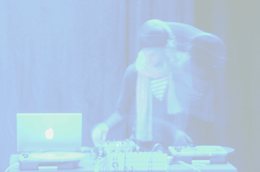
Episode 35 of Futurónica, a broadcast in Rádio Zero (every two weeks, on Friday nights, repeating on Tuesdays at 01h) airs tomorrow, May 6th at 21h (GMT).
The playlist for Futurónica #35 is:
- John Cage, Radio Music (1956, Nova Musicha N. 1, Cramps)
- S.E.T.I., N=N (1997, Antiphony, Ash International)
- Robert Hampson, Electron Transport Chain (1995, Mesmer Variations, Ash International)
- Stephan Mathieu, Prolog im Himmel (2008, Radioland, Die Schachtel)
- Alva Noto, Haliod Xerrox Copy 2 (Airfrance) (2007, Xerrox Vol. 1, Raster Noton)
- People Like Us, The Gimp / Sometimes (1999, Hate People Like Us)
- Mika Vainio, 4 x Radio (2009, Time Examined, Raster Noton)
You can hear Rádio Zero’s broadcasts at radiozero.pt/ouvir.







